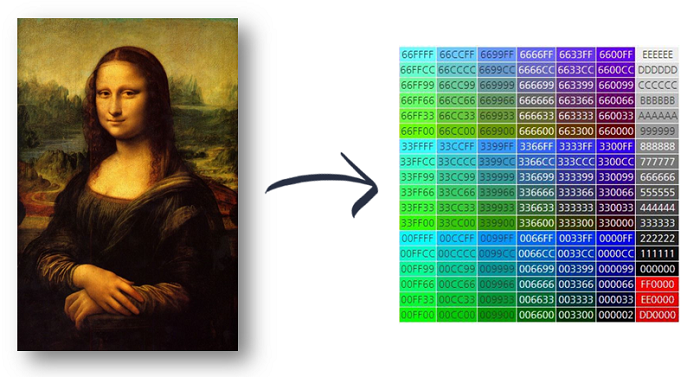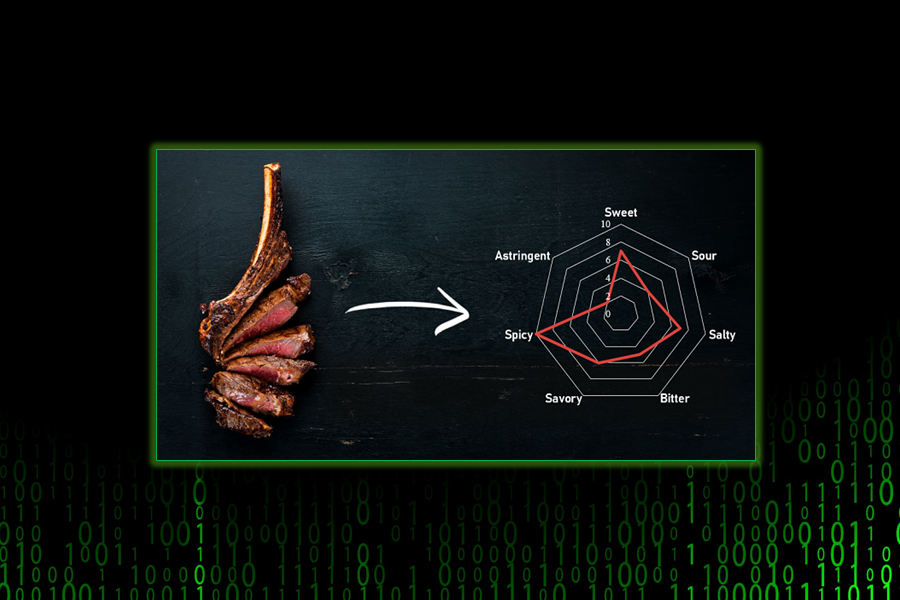
A man gazes at his juicy steak. His name is Cypher, and he does not appear to be a good guy. He was previously an ally of Neo, the main character of the movie The Matrix. Cypher later betrays Neo in the middle of the movie, as you might imagine.
In the first article, I explained basic concept of digital transformation through the movie The Matrix. In the movie, humans become live batteries lying down in capsules and artificial intelligence machines inject virtual memories into their brains. The entire world is digitized. According to the movie, digital transformation means “digitizing the world.”
Then how did these artificial intelligence machines digitize the whole world? There is a symbolic scene in the movie. Cypher was a member of the rebel forces fighting against the artificial intelligence machines. He woke up from the incubating capsule, rescued by the rebel army, and endlessly fought against the artificial intelligence machines. But strangely, real life is more miserable than when he was a battery for artificial intelligence machines. He has to eat unappetizing gruel solely for its nutrients and live in a cramped and dirty room in a hovercraft. He begins to have regrets because the fake life created by memories injected by the artificial intelligence machines was better. Then, an agent visits and offers him a sweet deal – return to the capsule, get his memories of the rebel army erased, and become rich. Cypher and the agent meet at a luxurious restaurant. Looking at a steak, Cypher says “I know this steak doesn't exist. I know that when I put it in my mouth, the Matrix is telling my brain that it is juicy and delicious.”
Let’s pay attention to the steak Cypher is holding. When you eat food, taste buds on your tongue send a message to your brain, and the brain compares the message with information stored in the brain and identifies whether the taste is sweet, salty, sour, bitter, savory, spicy or astringent. Simply put, if we digitize this process, we can quantify the sweet, sour, salty and other tastes of the steak.
Of course, the above is a simplified explanation for your understanding. Actually, taste is more than senses felt through one’s taste buds. The texture and temperature you feel when you put food into your mouth, the flavor that spreads to your tongue and nose, the color and shape of the food you see before eating it, and other elements all affect one’s taste. If even one of these elements is insufficient or excessive, we don’t feel that the food is tasty.
From this, you can easily estimate that a huge amount of data will be required to perfectly reproduce the real taste of a steak. That is why humans are the only animals that can cook. However, technology has significantly advanced, and now there is technology to quickly gather taste information using sensors and process/reproduce information gathered by artificial intelligence using robots or 3D printers. Of course, there are several things that need to be improved, and such technology is not cost-effective. Going back to the previous subject of digitizing the world, the easiest areas to be digitized are music and paintings. Notes of the tonal scale, like Do, Re, and Mi, can be immediately digitized. For instance:
- Do=01
- Re=10
- Mi=11
That is why the recording industry became the first victim of digital transformation. In the Middle Ages, people had to invite several musicians, who of course had to bring their own musical instruments, to enjoy orchestral music. Later, music was turned into magnetic records, which was the first phase of informatization. Back then, music was “contained” in substantial media, such as LP records, cassette tapes and CDs. Ultimately, music went literally digital. Nowadays, we make artificial intelligence machines learn digitized music written by genius composers of the past, and these machines can even compose songs. A few large K-pop agencies even applied artificial intelligence to composing music. They make previous hit songs into codes and have artificial intelligence programs learn the popular sections of the song to compose songs similarly. Then composers can select the output and mix them with the melodies they composed to make a final output.
The same applies to paintings. Paintings consist of colored dots. Combined dots become a portrait or landscape painting. These colored dots can be turned into RGB information. We can divide Pablo Picasso’s painting into approximately 48 million dots and turn them into RGB values, thus creating a drawing that looks like a photo taken by a state-of-the-art camera.

This has to do with a resolution, a term you can frequently see on a mobile phone’s specifications. A higher resolution is necessary to express images in more detail, thus requiring more data. Just like in the case of music, artificial intelligence can draw a painting similar to that of Picasso if we turn several of Picasso’s artworks into data and have artificial intelligence learn them. Recently, there were such attempts, and the artwork copied by artificial intelligence was not distinguishable even by experts.
Digital transformation means ‘digitizing the world.’ I think we can now further specify this definition. As explained through the above cases of steak, music, and paintings, nearly everything in the world can be digitized if technical issues are resolved. Such phenomenon can be noticed in our daily life as well. Nowadays, we can hardly see paper flyers or maps as these information are all digitized in our smartphones. What are steak, music, and paintings? They are ‘substances.’ So digital transformation is to ‘digitize substances.’
Written by Hojai Joo, a Senior Consultant of Samsung SDS
- Digital Transformation Approach 2
- Digital Transformation Approach 1
- Digital Business Requirements in the Era of Hyper-Personalization
- The Connection between the Brand and Customers
- Design thinking ⑪ - How to respond smartly to VUCA World
- Next-Generation UX: What Should Be Considered in Terms of Successful UI/UX
